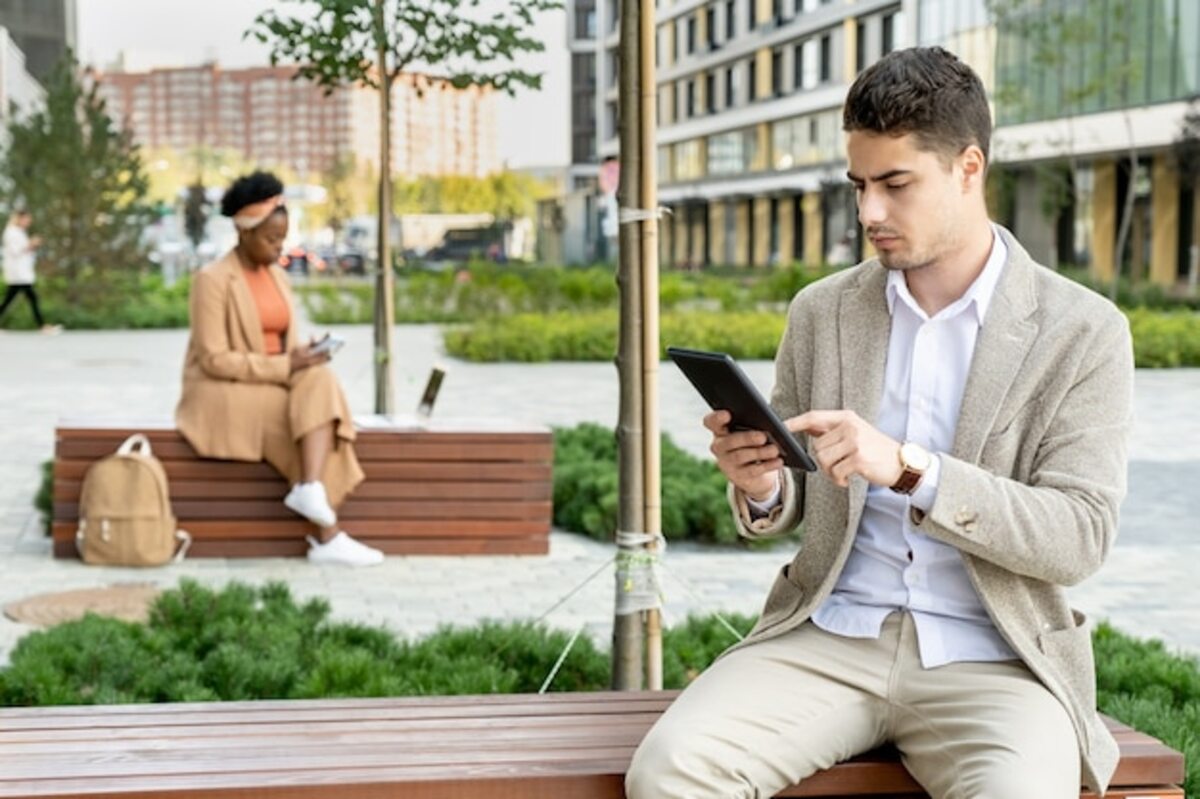Connectivity and Public Spaces: Key to Increasing Value

Connectivity plays a crucial role in the development of public spaces that not only enrich community life but also increase the value of properties. In a world where interconnection is vital, understanding how well-designed and accessible spaces can elevate the value of your real estate investment is essential. This article will explore how optimal connectivity transforms urban and rural areas, making them desirable places to live and work. Discover why investing in connectivity is key to the future of your properties!
The importance of connectivity in urban development
Connectivity in urban development refers to the ability of spaces and services to be effectively interrelated, which is essential for fostering an active and healthy community life. When areas are well connected, whether through efficient public transport, bike lanes, or pedestrian pathways, access to basic services such as schools, hospitals, and shops is facilitated. This accessibility not only improves the quality of life for residents but also promotes a sense of belonging and social cohesion, factors that are vital for the sustainable development of any community.
Additionally, connectivity directly influences the added value of properties. Investments in infrastructure that improve the interconnection between different urban areas generate a positive impact on land and building values. Buyers and investors tend to seek locations where they can enjoy easy access to various facilities and services. Thus, a good transportation network and public spaces designed with a focus on mobility can make a previously undervalued area become a sought-after place to live or invest. In summary, prioritizing connectivity is a smart strategy for both urban development and maximizing real estate return on investment.
2. Public spaces: engine of economic growth
Public spaces are fundamental in shaping a dynamic and thriving community. By providing areas for recreational activities, cultural events, and social gatherings, these spaces foster interaction among residents, enhancing quality of life and creating a sense of belonging. When a community has well-designed squares, parks, and pedestrian zones, it becomes a magnet for new residents and businesses. This not only revitalizes the local environment but also drives economic growth by attracting investments that seek to take advantage of the benefits of living near these vibrant areas.
Moreover, the relationship between public spaces and the appreciation of properties is evident: as accessible public infrastructure develops, such as efficient transportation and safe pathways, real estate value tends to increase. Families and individuals are willing to pay more for residences close to these amenities. Therefore, investing in public spaces not only enhances urban aesthetics but also serves as a catalyst for sustainable economic development. This synergy between connectivity and the quality of public space creates an attractive environment where opportunities flourish, benefiting both owners and tenants in their pursuit of a balanced and enriching life.
3. Strategies to improve connectivity in your community
To improve connectivity in your community, it is essential to implement a series of strategies that promote integration and access to public spaces. One of the most effective actions is to encourage the development of pedestrian infrastructure and bike lanes. By creating safe and pleasant paths for walking or cycling, residents are encouraged to move around without the need for motor vehicles, which not only improves public health but also increases the flow of people to local businesses. This generates a more dynamic and vibrant environment that can be attractive to new residents and investors.
Another key strategy is to enhance the use of efficient and accessible public transport. Investing in appropriate routes, reliable schedules, and affordable fares facilitates mobility within the community and connects residents to other nearby urban or rural areas. Additionally, incorporating technology such as mobile apps to check schedules and routes can further improve the user experience. A well-developed transport system not only fosters greater social interaction by bringing people closer to cultural events or recreational activities but also increases the economic value of the area by making it more accessible to everyone.
4. How parks and plazas increase real estate value
Parks and plazas are not only recreational spaces that promote social interaction, but they are also determining factors in real estate appreciation. Proximity to these green spaces enhances the quality of life for residents and attracts potential buyers and tenants. An area with access to a well-designed park can see a significant increase in property values, as people tend to prefer living near environments that offer opportunities for leisure and relaxation. Additionally, these public spaces can serve as community hubs, where events and activities are organized to strengthen the social fabric, making the area even more appealing.
Similarly, parks and plazas contribute to the sustainable development of a community, which is an increasingly valued aspect by investors. Well-maintained spaces not only beautify the urban environment but also promote a healthy lifestyle by encouraging outdoor activities such as walking, running, or biking. Cities that prioritize the creation and maintenance of green areas are often seen as more desirable places to live, which translates into a gradual increase in their real estate value. In summary, investing in connectivity and well-designed public spaces can result in significant economic benefits for both property owners and communities as a whole.
5. The impact of public transportation on property values
Public transportation is a fundamental element in the connectivity structure of a city, and its influence on property values is undeniable. When an area has efficient access to transportation systems like buses, trains, and trams, it becomes an attractive point for potential buyers and renters. This is because proximity to these mobility options means not only convenience and savings in travel time but also a reduction in dependence on personal vehicles. Properties located near stations or main routes tend to experience a significant increase in their value, as residents appreciate the ease of access to work, educational, and recreational centers.
Moreover, the impact of public transportation goes beyond mere access; it can also influence the economic development of an area. As regions become more accessible thanks to efficient public transportation, they attract new investments and businesses looking to benefit from the flow of people. This economic growth contributes to improving local infrastructure and community services, which in turn further enhances the quality of life in the region. Therefore, investing in properties near good transportation connections not only guarantees an immediate return due to the increase in value, but also ensures sustainable long-term profitability thanks to the continuous development of the urban environment.
6. Urban design: creating accessible and appealing places
Urban design plays a fundamental role in creating accessible and attractive places that foster social interaction and improve the quality of life for residents. A well-designed public space should not only be functional but also aesthetically pleasing, incorporating elements such as green areas, comfortable and accessible urban furniture, as well as safe pedestrian routes. By integrating these aspects into urban development, an environment is promoted where people feel invited to enjoy the space, which in turn boosts local economic activity and makes the area more desirable for future buyers and tenants.
Additionally, an inclusive approach to urban design ensures that all members of the community can access and benefit from these spaces. This involves considering the needs of diverse populations, including people with disabilities, families with young children, and older adults. Creating accessible places is not only a social responsibility but also contributes to increasing real estate value in the area. Communities that prioritize access and inclusion tend to attract more interest from developers and investors, establishing themselves as strategic points within the real estate market.
7. Success stories: cities that shine for their connectivity
Cities that have prioritized connectivity in their public spaces stand out as brilliant examples to follow. Cities like Barcelona and Copenhagen have implemented efficient and accessible public transport networks, as well as extensive pedestrian zones that promote not only easy movement but also social interaction. In these places, citizens enjoy an environment where walking or cycling is safe and pleasant, which fosters greater community engagement and revitalizes local commerce. The improvement of connectivity has led to a notable increase in property values, turning previously overlooked neighborhoods into attractive destinations for both residents and investors.
On the other hand, Medellín has revolutionized its image thanks to innovations such as the Metrocable and the integrated stops that connect various areas of the city. This approach not only improved access to previously isolated areas but also transformed public spaces into vibrant meeting points. The creation of urban parks and accessible plazas has boosted local economic development by attracting businesses and tourists. This model demonstrates how a strategic investment in connectivity infrastructure can radically transform an urban area, increasing its real estate value and providing its inhabitants with a higher quality of life.
8. Sustainable future: connectivity and public spaces as a priority
Sustainability has become an imperative in contemporary urban planning, where connectivity and public spaces play a central role. The cities of the future must prioritize the design of areas that are not only accessible but also environmentally friendly. This involves creating efficient transportation networks, encouraging bicycle use, and promoting walking as viable alternatives to car use. By integrating green spaces and recreational areas within these connections, a healthier and more cohesive community is fostered, where people can interact and enjoy their surroundings without overly relying on polluting resources.
Furthermore, sustainable development goes beyond mere infrastructure; it also encompasses the creation of resilient communities that can adapt to climatic and social changes. Well-designed public spaces offer opportunities for cultural activities, community events, and social gatherings, thereby strengthening the social fabric. Investments in these spaces not only improve the quality of life for their inhabitants but also increase the appeal for new residents and investors. Ultimately, prioritizing connectivity and public spaces is not just a strategy to enhance real estate value; it is a commitment to a more sustainable and inclusive future for all.



